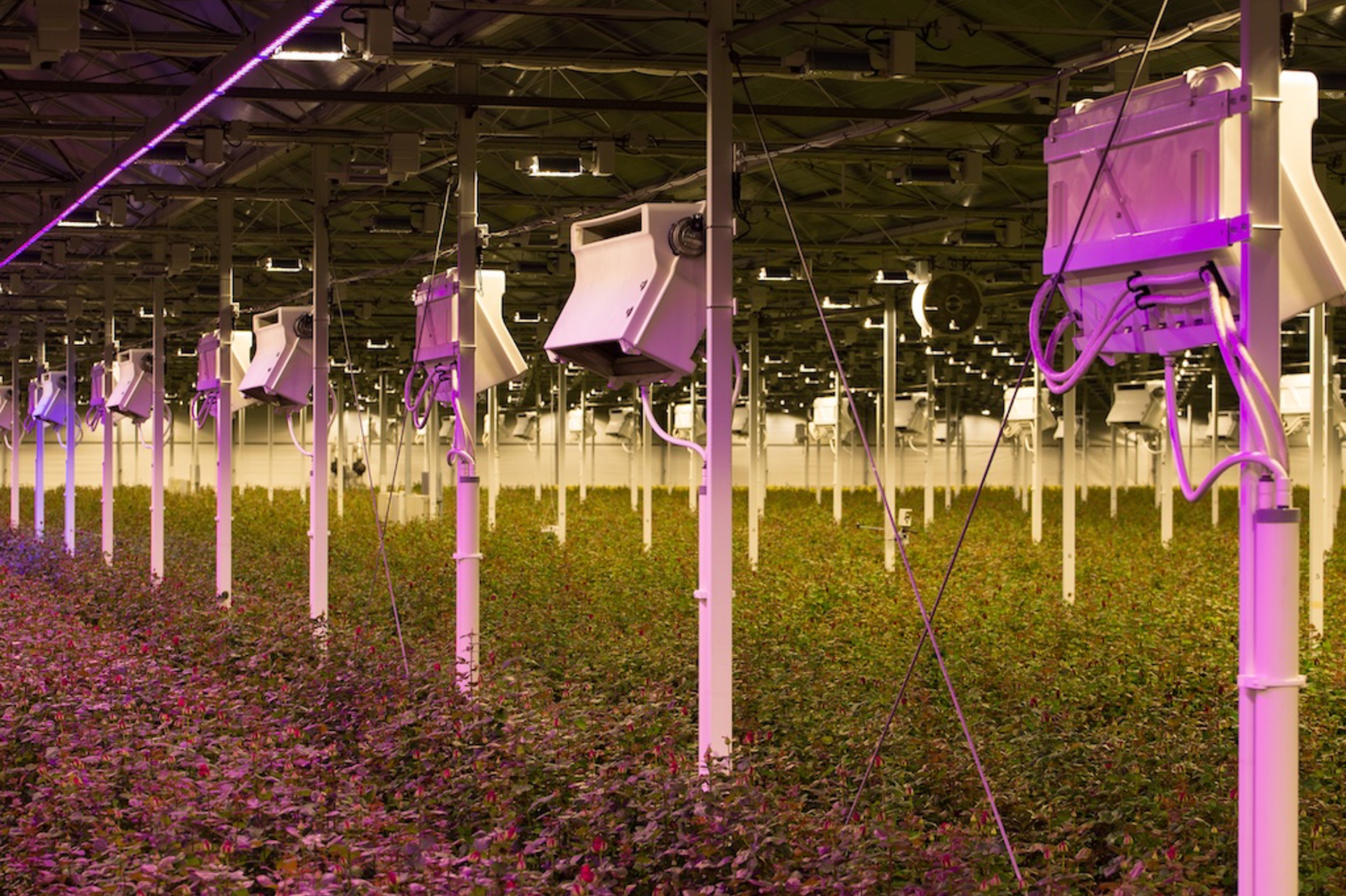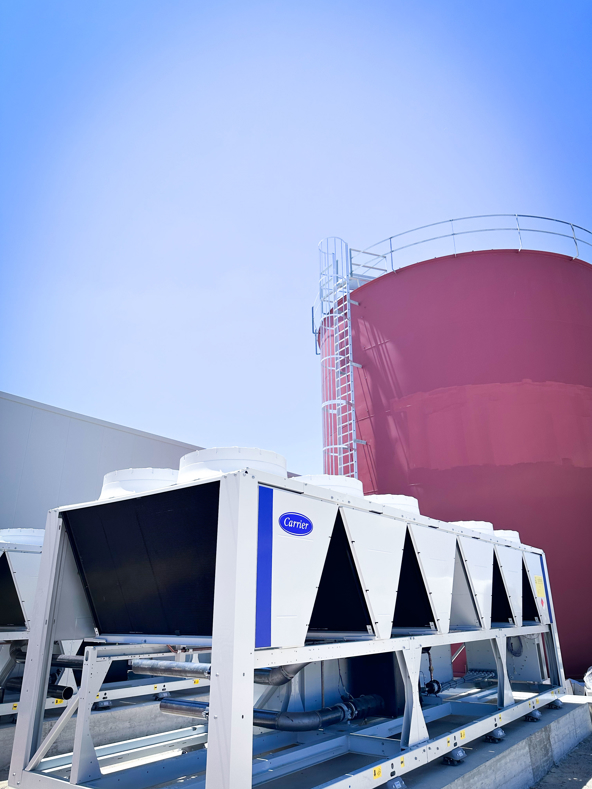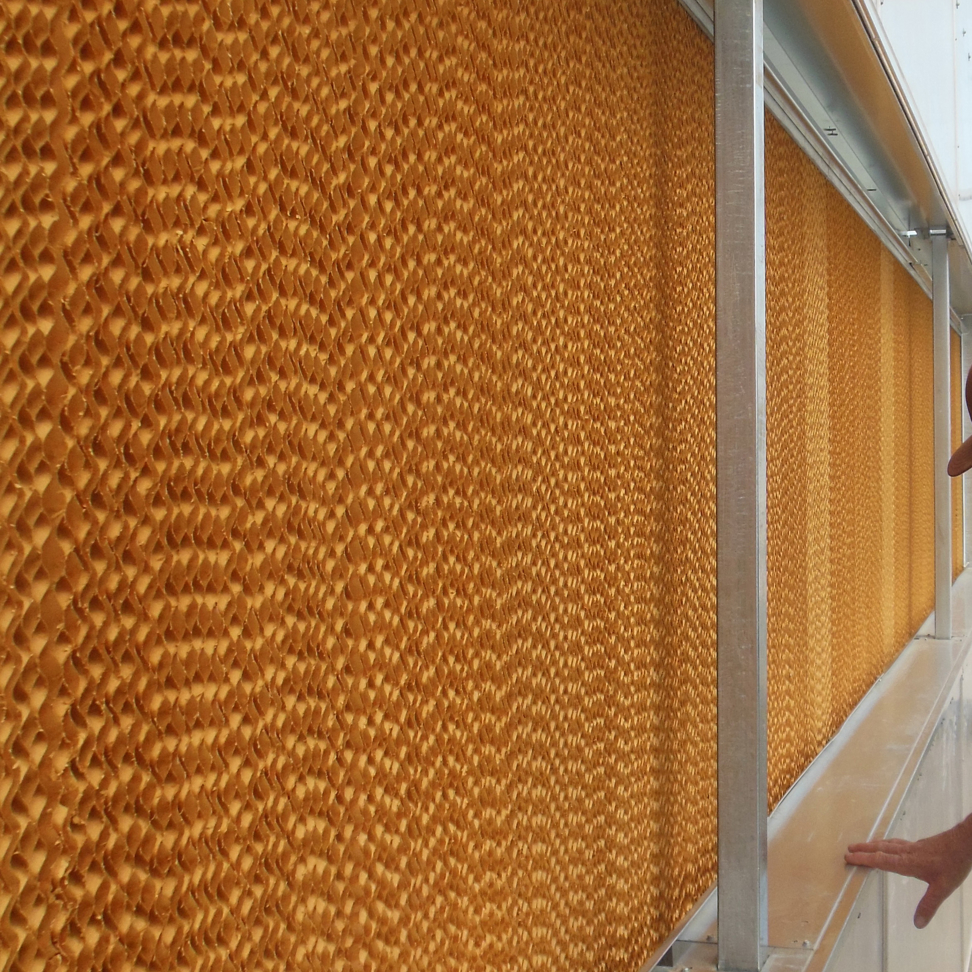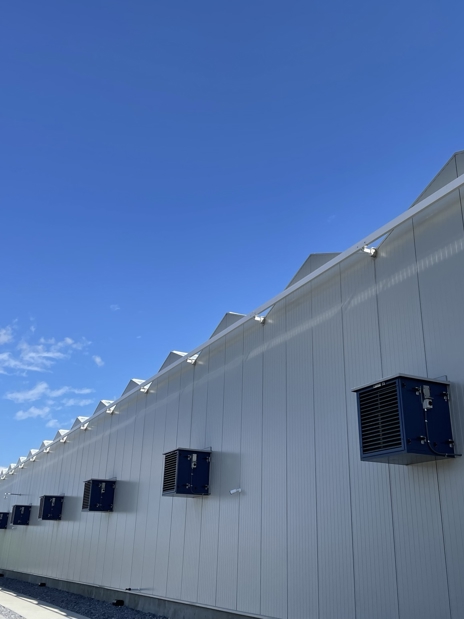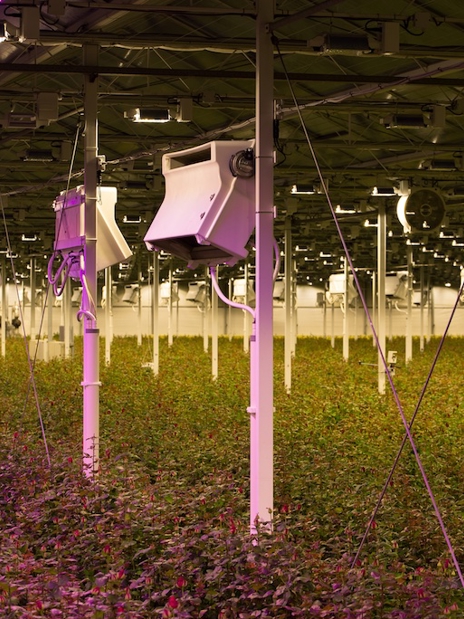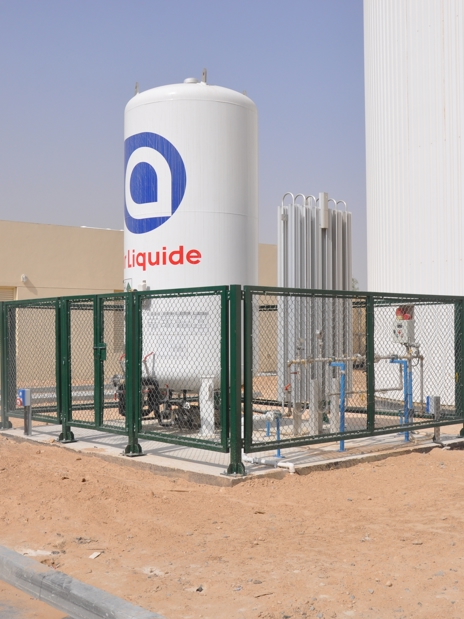Evaporative cooling is the process by which water particles evaporate, leading to a drop in temperature due to increased humidity. There are two systems that use this principle in commercial greenhouses: high-pressure misting and the Pad & Fan cooling system.
Pad & Fan Greenhouse
The Pad & Fan cooling method is a widely applicable cooling system due to its simplicity. As the name indicates, it uses a combination of wet-pads and ventilators. A set of large fans blow air out of the greenhouse, causing a suction-draught through the greenhouse. On the opposite sides of the fans, pad-walls are installed which are kept wet. The suction-movement caused by the fans, forces hot outside air to be pulled into the greenhouse through the wet pads. Water from the pads evaporates into the hot air, increasing its humidity whilst lowering the temperature.
High Pressure Fogging
Similar to the Pad & Fan system, High Pressure Fogging works on the principal of evaporative cooling. Under a high pressure, water is introduced to a nozzle with a miniscule opening. In essence, water is divided into tiny particles, creating fog. When the temperature and humidity-levels in the greenhouse allow it, these water particles are absorbed into the surrounding air before they hit the leave of the crop. Just like Pad & Fan, the humidity is increased and the greenhouse air is chilled. High Pressure Fogging is also installed as humidity control in mechanically cooled greenhouses.
Climate Chambers
Both Pad & Fan and High Pressure Fogging are used in developments of the semi-closed greenhouse. The main difference is the way in which the cooled air is introduced into the greenhouse. Semi-closed greenhouses make use of a so-called climate chamber, where the air is either cooled or heated. With large ventilators this treated air is blown into the greenhouse in polyethylene tubes underneath the hanging gutters.
